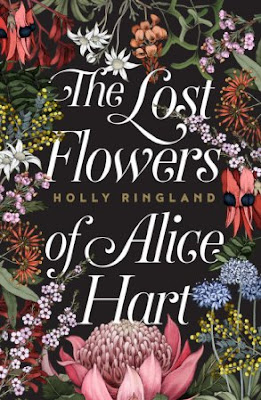Book Review: The Lost Flowers of Alice Hart
The Lost Flowers of Alice Hart
Holly Ringland
Harper Collins 2018
Holly Ringland
Harper Collins 2018
Given the amount of buzz that has already surrounded the
release of Holly Ringland’s debut novel, The
Lost Flowers of Alice Hart, it would be unsurprising if the book did not
live up to the hype. In recent years,
booksellers and reviewers have seen the promise ‘the most exciting debut of the
year’ emblazoned on numerous covers, and have collectively thought, “surely
that cannot be true for all of them.”
But when it comes to The Lost
Flowers of Alice Hart, the only disappointing thing about it is that
readers will have to wait until April 2018 to experience it.
The Lost Flowers of
Alice Hart tells the story of Alice Hart, who goes to live with her
estranged grandmother after a family tragedy.
Traumatised, Alice takes solace in the assortment of women who live at
her grandmother’s property, Thornfield, where native flowers are grown and the
Victorian art of floriography—or communicating through certain floral
arrangements—is practised. The women
(and dog) at Thornfield become Alice’s family, and under their care, she grows
up and takes her place in a long line of women from Thornfield who have loved
and lost fiercely. Partly set at
beautiful Thornfield, a sprawling inland property with a river at its heart in
more ways than one, and partly set at a National Park in the Northern Territory,
Alice’s story is one which is bound up in the language of Australian native
flowers, their hidden meanings, their connection to Australia’s history, and
the people of the present day.
But perhaps the best thing about The Lost Flowers of Alice Hart is that it is a story about
stories. The flowers tell stories, and
help Alice to communicate when she cannot find the right words, but
storytelling also makes appearances in other forms. There is family history running through this
book, and the reader gets to know (albeit briefly) four generations of
Thornfield women, as well as the histories of The Flowers—the women who call
the property home. Then there are story
books and fairy tales. For Alice, books
have always been a refuge, and discovering the town library is a turning point
in her young life, a way of taking back some of her independence. When she moves to the National Park and has
to make her home feel more like her own, one of the things she does is to
furnish it with as many books as she can afford, bringing to mind the CS Lewis
quote—“When I get a little money, I buy books, and if there is anything left
over, I buy food.” Fairy tales and
classic stories are alluded to everywhere in this novel, from the allusions to Jane Eyre made subtly by the naming of the
flower farm, to the not so subtle hints at Alice being named after the heroine
in Lewis Carroll’s Alice in Wonderland. For anyone who has found a friend in stories,
or an escape, or whatever they needed, Alice’s story will be a familiar
one. She is a heroine to fall in love
with, to root for, and to care deeply about.
This is a novel written with love and with a skilled
hand. It is whimsical without being silly,
magical without being far-fetched, beautiful without being filled with purple
prose. I adored it, and I cannot wait to
read it again in April.
Five stars.

